When creating a sound and repeating golf swing, there are few things more important than being able to swing dynamically yet in balance
– September 14, 2022 | Text Scott Cranfield
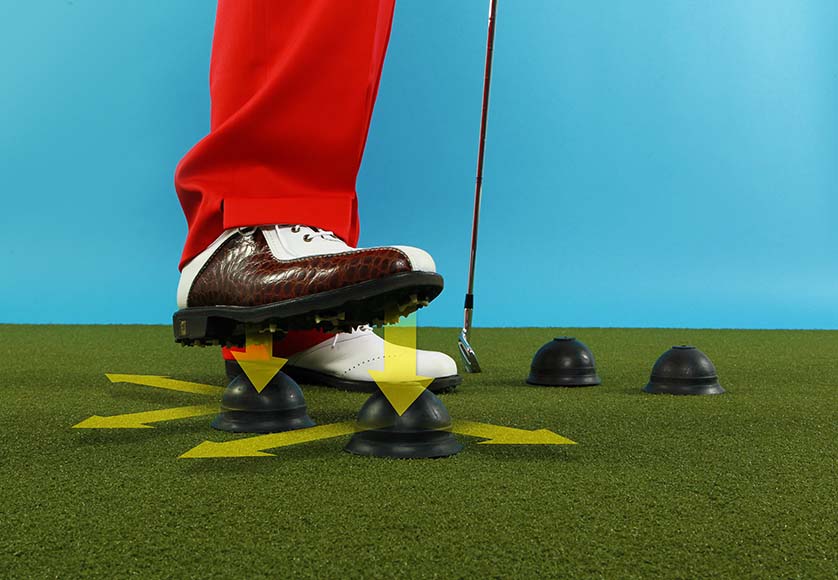
On the face of it swinging in balance sounds quite easy, and sometimes it can be; but do you really understand what this means? If you don’t, how will you be able to repeat it on a consistent basis?
This article will give you a true understanding of what I mean by good balance in the swing. You will learn how to move your body in the most effective way, and always from a balanced platform.
Once I really began to understand balance and then apply it to my coaching, I saw some of the most amazing results. Long-term concerns golfers had about their swings either instantly disappeared or reduced massively, to the extent that, had I not captured their progress on video, they would never have believed me. You can make this progress too; but to gain a better understanding of balance, we must first take a step back in time.
The lost art of natural movement
Around the year 2000, when I began to really understand balance in the golf swing, I started using the expression that I no longer teach golf swings, but rather teach movement and let the golf swing develop from there. This expression alone really helped some of my clients free up and feel less judged, because it seems easier to develop movement than it does a perfect golf swing.
I believe this change from a movement-based action to the search for ‘perfection’ has been one of the major shifts in the playing and coaching of golf over the last 50 years or so. Natural golfers built their swing around ‘there’s the ball, here’s my club, that’s where I am going to hit it… whack!’ From this simple concept a flowing and fully integrated movement developed. Ask a natural golfer for their swing thoughts, and they will probably look at you blankly.
Yes, before so much attention was placed on achieving the perfect swing, golf was played far more naturally and athletically. Now I know some of you will want to argue with that and tell me that golfers today are far more athletic; but while this may be true from a work-out and fitness perspective, I do not believe it to be true in terms of golf swing movement. Golfers from the Snead, Hogan, Nelson era of the 1940s and 50s swung the golf club with a lot more integration of the whole body – and in particular better footwork.
Nothing works in isolation

When I am hosting seminars to demonstrate this point, I get the audience to play the ‘Standing-up game’. They work in groups of three. One person lies on the floor facing up. The other two have the job of explaining to their team member how to stand up. The person on the floor is to take the instructions literally, so when instructed “lift your knees up,” he has to challenge them: “Clearly my knees don’t lift themselves, so what needs to happen to lift my knees up?” People can end up in some of the most hilarious positions even the Kama Sutra did not think of!
The point of the exercise is in giving the message that breaking your swing down into parts can damage the whole. Sure, some can practise this way and then, when it comes to playing, they have a natural rhythm that brings everything together again. But for others it can create a real staccato rhythm not conducive to good shots.
The approach to movement I will take you through in this chapter will help keep all the body integrated for optimum movement, rhythm and timing. If you are ready to learn, then we will begin by learning how to build a balanced platform.
So what is good balance?
Our natural body structure sees us balanced through the centre of both feet evenly. Where is yours? This could be something you have never thought about before, so let’s take the first test.
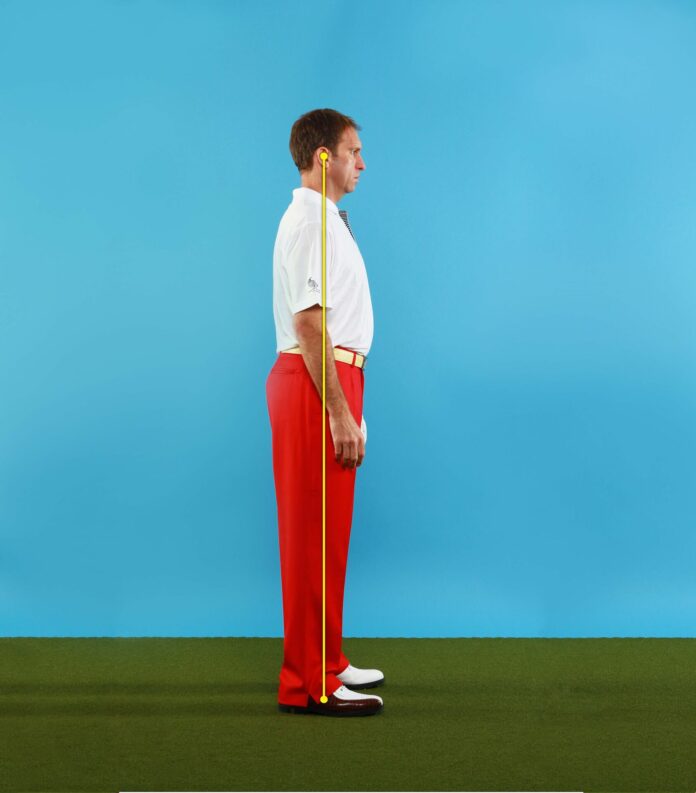
Stand upright as if chatting to someone. Focus on your weight distribution to find out where is it positioned: is it centred or favouring the front or back of your feet? Wherever it is, stabilise your weight over the centre of your feet and really get associated to this feeling. You may find closing your eyes during this exercise increases your awareness of where you are in space, and so fine-tunes your balance.
Of course, this idea of being grounded or centred is something that has been practised for millennia in Tai Chi and other eastern disciplines. Just practising bringing your attention to your feet and the ground is itself a great exercise to keep you grounded and even reduce stress.
Now, to enhance your awareness and understanding, play around by gradually moving your weight towards your toes and see how your body reacts. Then do the same to your heels. You will find at the point of losing balance your body will compensate by maybe putting your arms out or arching your back. Although much more subtle, this is an example of what happens in the golf swing; when you get out of balance, your body compensates to keep you balanced. You know how the smallest things can affect a golf shot; this is why learning to swing in balance is a definite key to helping you play better golf.
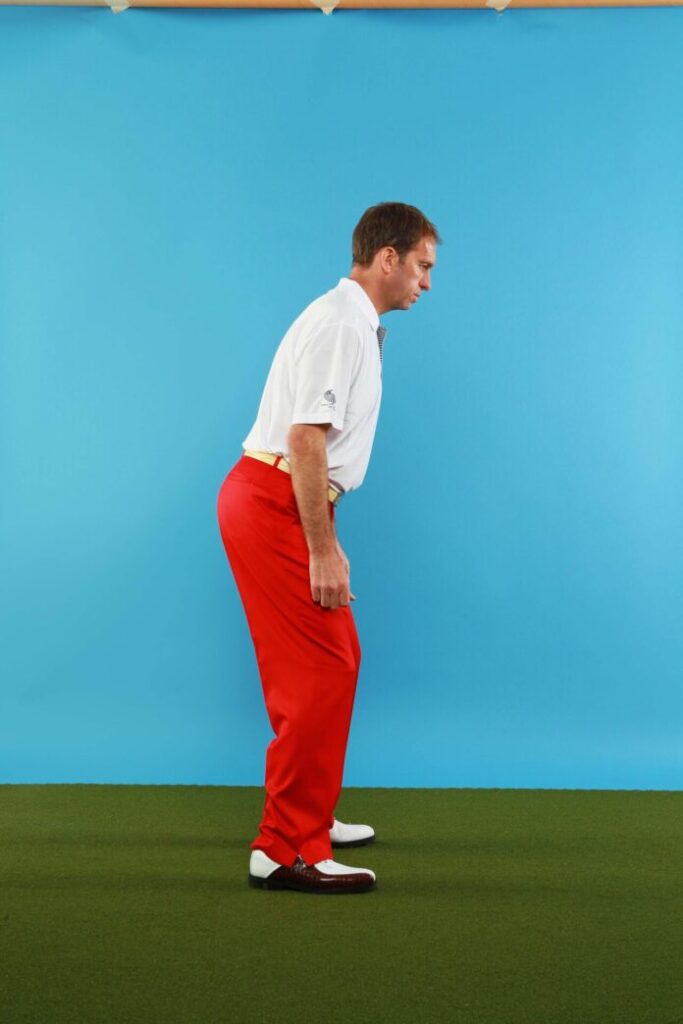
On this last point, could it therefore mean the technical flaws we see in the golf swing are simply your body’s search for balance?
My experience tells me that often the answer is yes. Some of the moves you have in your golf swing you refer to as technical flaws may simply be your body compensating to keep you in balance.
I suggest that if you simply focus on learning to feel balanced through the swing many issues will at the least reduce and quite possibly disappear. Even if you were to choose more traditional methods to fix these problems, making yourself aware of how the changes are going to help your balance would speed up the correction process.
Another way of checking you are starting in the optimal position – and in fact a good feeling for beginning to involve the legs – is to take up your posture (without a club) and simply take small jumps. If you can do this by going straight up and down landing on the same spot, you have started with your weight in the ideal place. If you jump but fall forward, your weight has gone too far to the toes; if you are back on your heels too much it’s hard to get any lift at all.
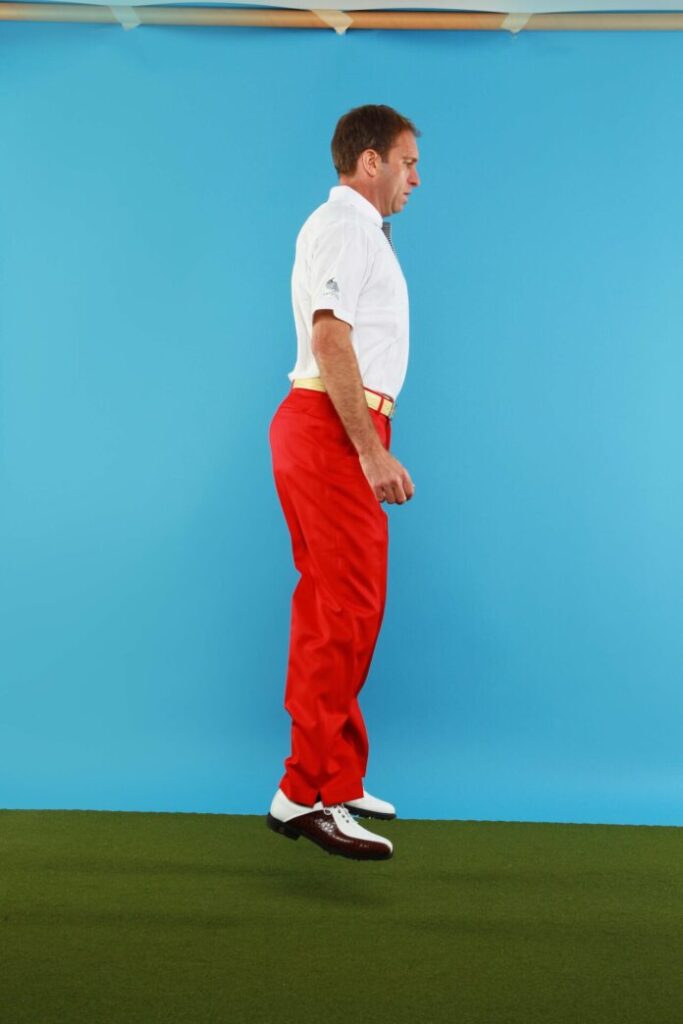
So, once you are in your set-up position, give yourself a sense that you have enough spring through the centre of your feet as if ready to jump. This feeling will give you a starting position that is stable yet alive.
How your feet create ‘free energy’
The way our feet are constructed is a major part of why it is so important to have your weight balanced centrally. Your feet are like springs coiling and lengthening as you move in and out of them. I imagine this like a plunger you use on a blocked sink; as you put pressure on the plunger it spreads and creates a suction that creates a springlike rebound. This is a great analogy of how your feet work as you put pressure through them with movement, you are getting ‘free’ energy – something we could all benefit from in our golf swing!
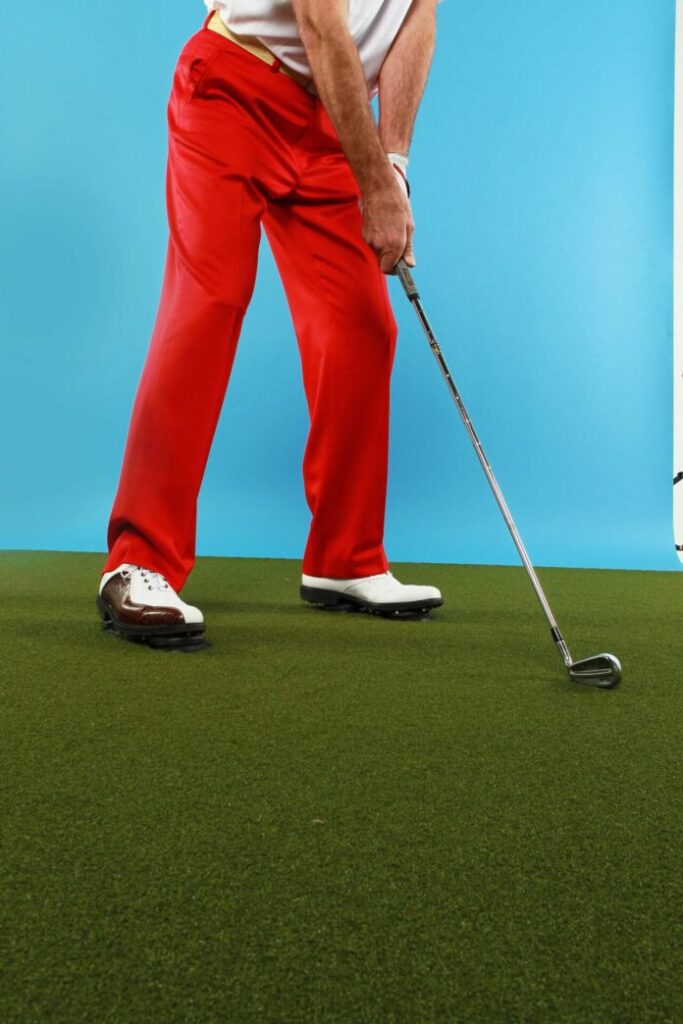
Balance: Summing up
Swinging with weight balanced through the centre of your feet will rid your game of swing-flaw compensation and pave the way for a simple, repeatable action.
If you have any questions or would like to find out more about my coaching in the Algarve and UK, please visit www.scottcranfield.com or contact me on scott@scottcranfield.com
For more tips to help your golf visit, go to https://www.facebook.com/intuitivegolf
Read more:
Golf Tips: How to make good golf shots and control de ball
Discover the importance of going back to the basics to improve your golf
The importance of mind & body to the perfect golf swing
Want to know the secret to better golf? It’s all in the feet










